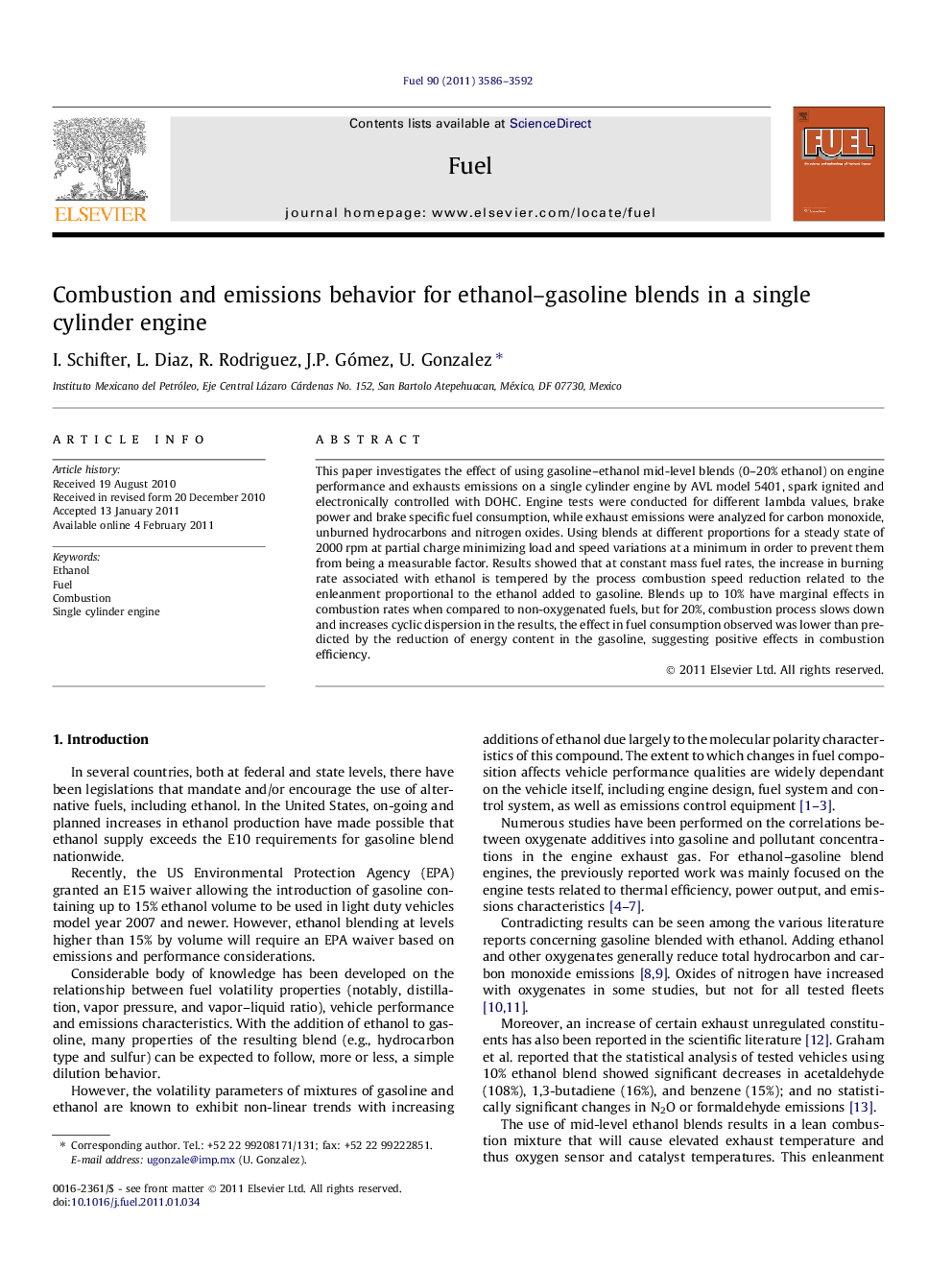| Article ID | Journal | Published Year | Pages | File Type |
|---|---|---|---|---|
| 206353 | Fuel | 2011 | 7 Pages |
This paper investigates the effect of using gasoline–ethanol mid-level blends (0–20% ethanol) on engine performance and exhausts emissions on a single cylinder engine by AVL model 5401, spark ignited and electronically controlled with DOHC. Engine tests were conducted for different lambda values, brake power and brake specific fuel consumption, while exhaust emissions were analyzed for carbon monoxide, unburned hydrocarbons and nitrogen oxides. Using blends at different proportions for a steady state of 2000 rpm at partial charge minimizing load and speed variations at a minimum in order to prevent them from being a measurable factor. Results showed that at constant mass fuel rates, the increase in burning rate associated with ethanol is tempered by the process combustion speed reduction related to the enleanment proportional to the ethanol added to gasoline. Blends up to 10% have marginal effects in combustion rates when compared to non-oxygenated fuels, but for 20%, combustion process slows down and increases cyclic dispersion in the results, the effect in fuel consumption observed was lower than predicted by the reduction of energy content in the gasoline, suggesting positive effects in combustion efficiency.
Research highlights► Ethanol-Gasoline blends were tested on engine performance and exhaust emissions for different Lambda values. ► Blends with 10% and low contents of Ethanol show marginal effects. ► Blends with 20% Ethanol have measurable negative effects. ► Fuel consumption effect found smaller than predicted by the reduction in fuel energy contents associated with ethanol addition. ► At constant mass fuel rate, the increases in burning rate are tempered by the enleanment effect.
